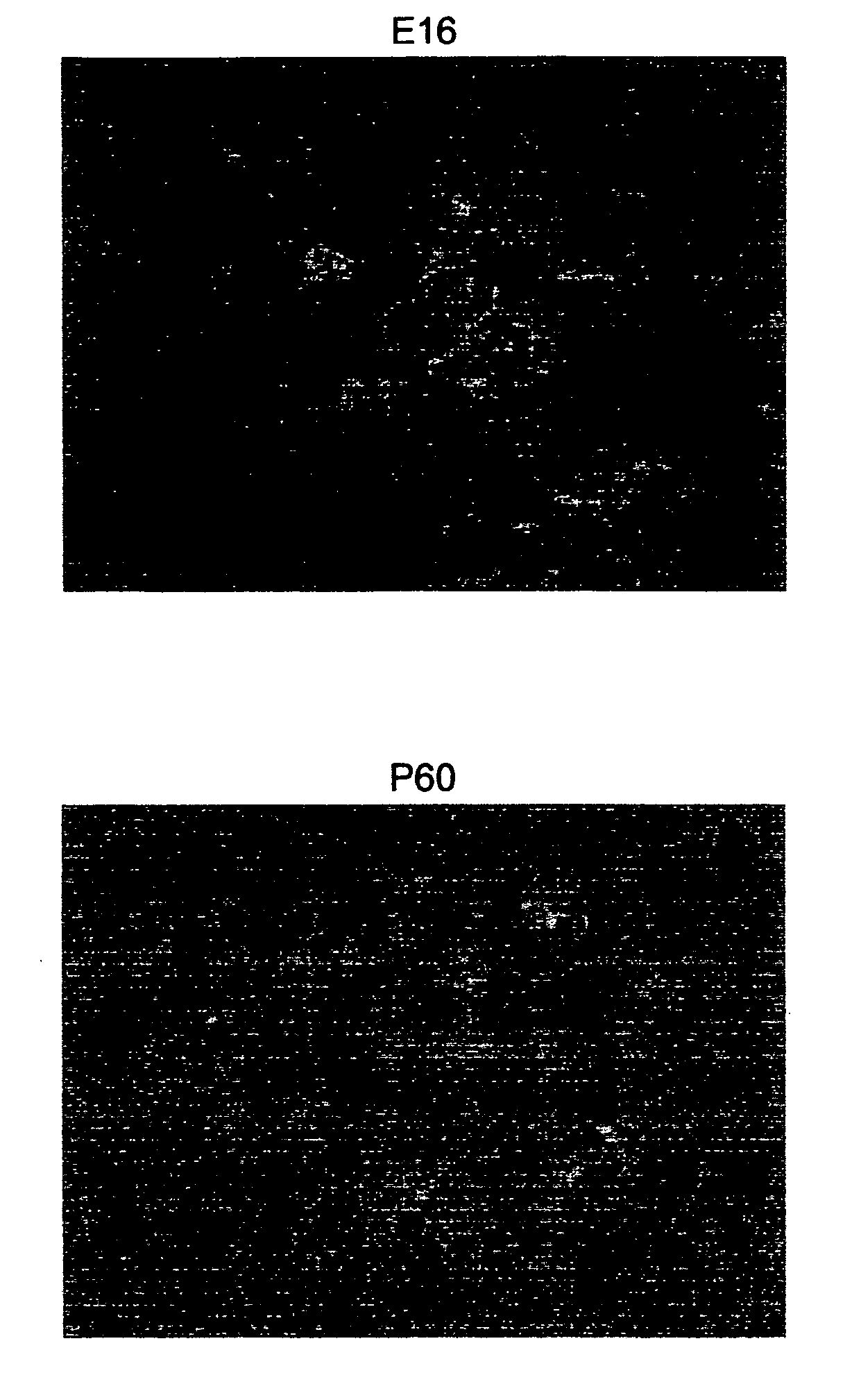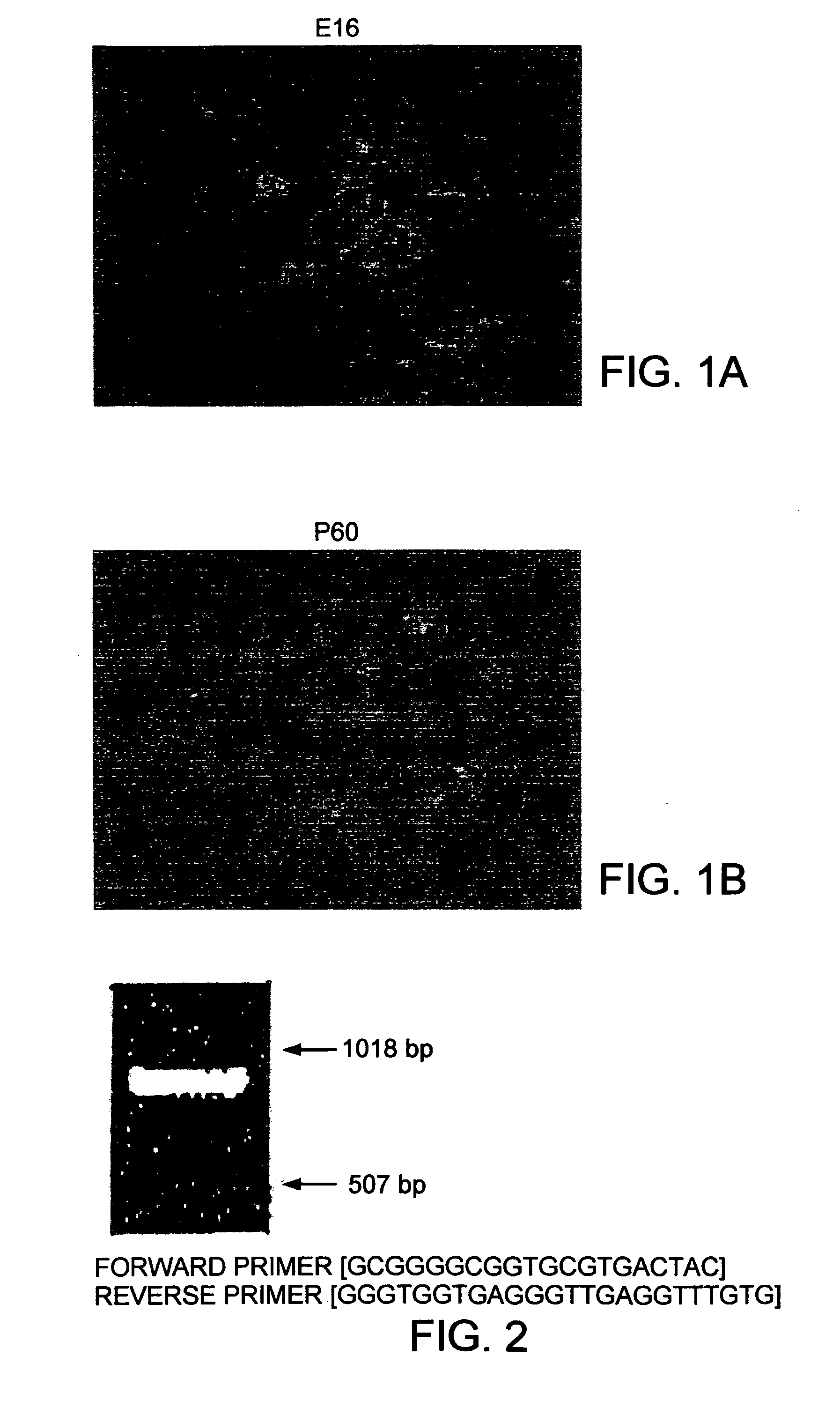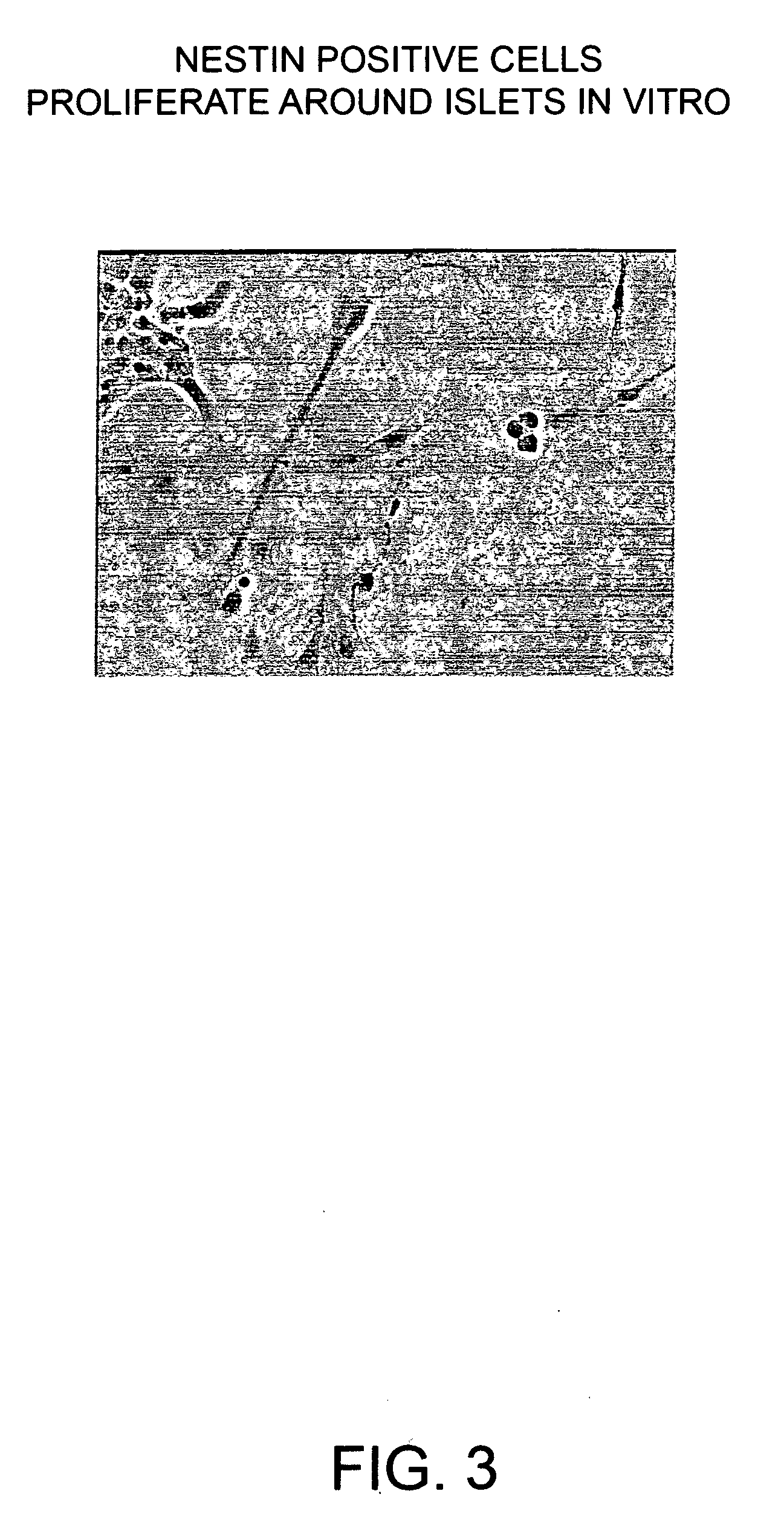Stem cells of the islets of langerhans and their use in treating diabetes mellitus
a technology of stem cells and islets, applied in the field of stem cells and their differentiation, can solve the problems of unknown fractions of stem cells and what contaminating cell types may be presen
- Summary
- Abstract
- Description
- Claims
- Application Information
AI Technical Summary
Benefits of technology
Problems solved by technology
Method used
Image
Examples
example 1
Isolation of Nestin-Positive Stem Cells from Rat Pancreas.
[0209] Rat islets were isolated from the pancreata of 2-3 month old Sprague-Dawley rats using the collagenase digestion method described by Lacy and Kostianovsky. Human islets were provided by the Diabetes Research Institute, Miami, Fla. using collagenase digestion. The islets were cultured for 96 hrs at 37° C. in 12-well plates (Falcon 3043 plates, Becton Dickinson, Lincoln Park, N.J.) that had been coated with concanavalin A. The culture medium was RPMI 1640 supplemented with 10% fetal bovine serum, 1 mM sodium pyruvate, 10 mM HEPES buffer, 100 μg / ml streptomycin, 100 units / ml penicillin, 0.25 μg / ml amphotericin B (GIBCO BRL, Life Science Technology, Gaithersburg, Md.), and 71.5 mM β-mercaptoethanol (Sigma, St. Louis, Mo.).
[0210] After 96 hrs, fibroblasts and other non-islet cells had adhered to the surface of concanavalin A coated wells and the islets remained floating (did not adhere to the surface). At this time, the ...
example 2
[0212] Differentiation of Pancreatic Stem Cells to Form Islet
[0213] Pancreatic islets from rats were first cultured in RPMI medium containing 10% fetal bovine serum using concanavalin-A coated 12-well plates. The islets were maintained in culture for three days in the absence of added growth factors other than those supplied by fetal bovine serum. After this period, during which the islets did not attach, the islets were transferred to fresh plates without concanavalin A. The stem cells were then stimulated to proliferate out from the islets as a monolayer by exposing them to bFGF-2 (20 ng / ml) and EGF (20 ng / ml) for 24 days. After the 24 day period, the monolayer was confluent. Among them was a population of cells surrounding the islets. Cells from that population were picked and subcloned into new 12-well plates and again cultured in the medium containing bFGF and EGF. The subcloned cells proliferated rapidly into a monolayer in a clonal fashion, expanding from the center to the p...
example 3
Isolation and Culture of Human or Rat Pancreatic Islets
[0214] Human pancreatic islets were isolated and cultured. Human islet tissue was obtained from the islet distribution program of the Cell Transplant Center, Diabetes Research Institute, University of Miami School of Medicine and the Juvenile Diabetes Foundation Center for Islet Transplantation, Harvard Medical School, Boston, Mass. Thoroughly washed islets were handpicked, suspended in modified RPMI 1640 media (11.1 mM glucose) supplemented with 10% fetal bovine serum, 10 mM HEPES buffer, 1 mM sodium pyruvate, 100 U per mL penicillin G sodium, 100 μg per mL streptomycin sulfate, 0.25 ng per mL amphotericin B, and 71.5 μM β-mercaptoethanol, and added to Falcon 3043 12-well tissue culture plates that had been coated with Concanavalin A (ConA). The islet preparation was incubated for 96 hrs at 37° C. with 95% air and 5% CO2. In these conditions, many islets remained in suspension (floated), whereas fibroblasts and other non-isle...
PUM
| Property | Measurement | Unit |
|---|---|---|
| diameter | aaaaa | aaaaa |
| diameter | aaaaa | aaaaa |
| temperature | aaaaa | aaaaa |
Abstract
Description
Claims
Application Information
 Login to View More
Login to View More - R&D
- Intellectual Property
- Life Sciences
- Materials
- Tech Scout
- Unparalleled Data Quality
- Higher Quality Content
- 60% Fewer Hallucinations
Browse by: Latest US Patents, China's latest patents, Technical Efficacy Thesaurus, Application Domain, Technology Topic, Popular Technical Reports.
© 2025 PatSnap. All rights reserved.Legal|Privacy policy|Modern Slavery Act Transparency Statement|Sitemap|About US| Contact US: help@patsnap.com



